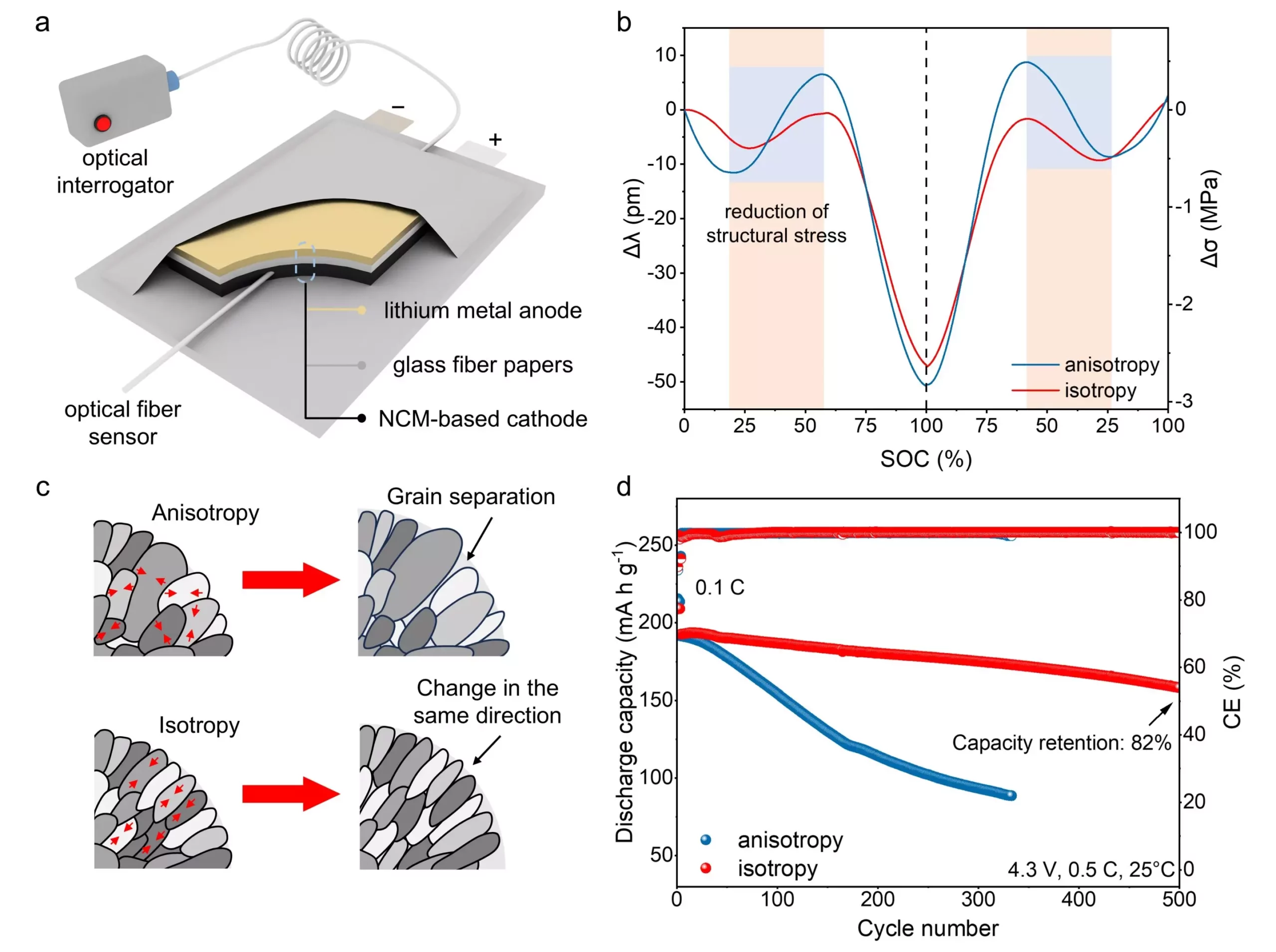NCM811 materials, composed of nickel, cobalt, and manganese in a specific ratio, have emerged as vital components in the advancement of high energy density lithium-ion batteries. Their high capacity and voltage have attracted significant research interest, but they come with a persistent challenge: the integrity of the materials under operational stress. The polycrystalline structure of NCM811 is susceptible to cracking and degradation during battery cycling, which can lead to a significant loss of active material and ultimately shorten the battery’s lifespan. Thus, thorough investigation into the chemo-mechanical properties of these materials is critical for enhancing the durability and efficiency of lithium-ion batteries.
To tackle the issues associated with the mechanical stress of NCM811, a research team spearheaded by Prof. Yunhui Huang and Prof. Zhen Li has pioneered an innovative solution. They employed optical fibers for in operando monitoring, allowing for real-time observation of stress evolution within the cathode material. This approach offers a sophisticated way to analyze how materials behave under operational conditions, enabling researchers to directly correlate stress levels with structural integrity. Conventional methods of monitoring have limitations, and by integrating optical fiber technology into the battery’s structure, the research team has enhanced the ability to illuminate the mechanisms responsible for material failure.
The crucial findings of the research revealed two primary types of stress affecting the NCM811 materials: chemical stress and structural stress. Chemical stress emerges during the cycling process of lithium ions as materials undergo (de)lithiation, a process that is inherently unavoidable. However, the levels of structural stress produced during this cycling are particularly problematic, as they lead to the formation of cracks detrimental to battery performance. By exploring the relationship between crystallographic behavior and stress, researchers identified that the nonmonotonic variation of the c-axis during the (de)lithiation cycles contributes significantly to structural stress accumulation.
The implications of these findings guide the development of strategies aimed at mitigating stress-induced damage. One proposed solution involves improving the anisotropy of primary particles within the NCM811 structure to create a more ordered arrangement that can better withstand mechanical strain. The results from the study corroborate this hypothesis, showing that structural stress is notably reduced when employing ordered arrangements. Moreover, the material demonstrated an impressive retention capacity of 82% after 500 cycles at a 0.5C rate, underscoring the potential of engineered NCM811 compositions.
The integration of optical sensing technology marks a significant leap forward in battery monitoring and safety. The successful real-time stress assessment offers valuable insights into the chemo-mechanical behavior of NCM811 materials, guiding researchers towards the development of more resilient battery chemistries. As Prof. Huang notes, the future of optical sensing in battery technology is promising. It paves the path for smarter, safer, and more efficient energy storage solutions essential for next-generation electronics and electric vehicles. Through continued innovation in this field, we can expect to overcome current challenges and embrace the full potential of lithium-ion battery technology.

